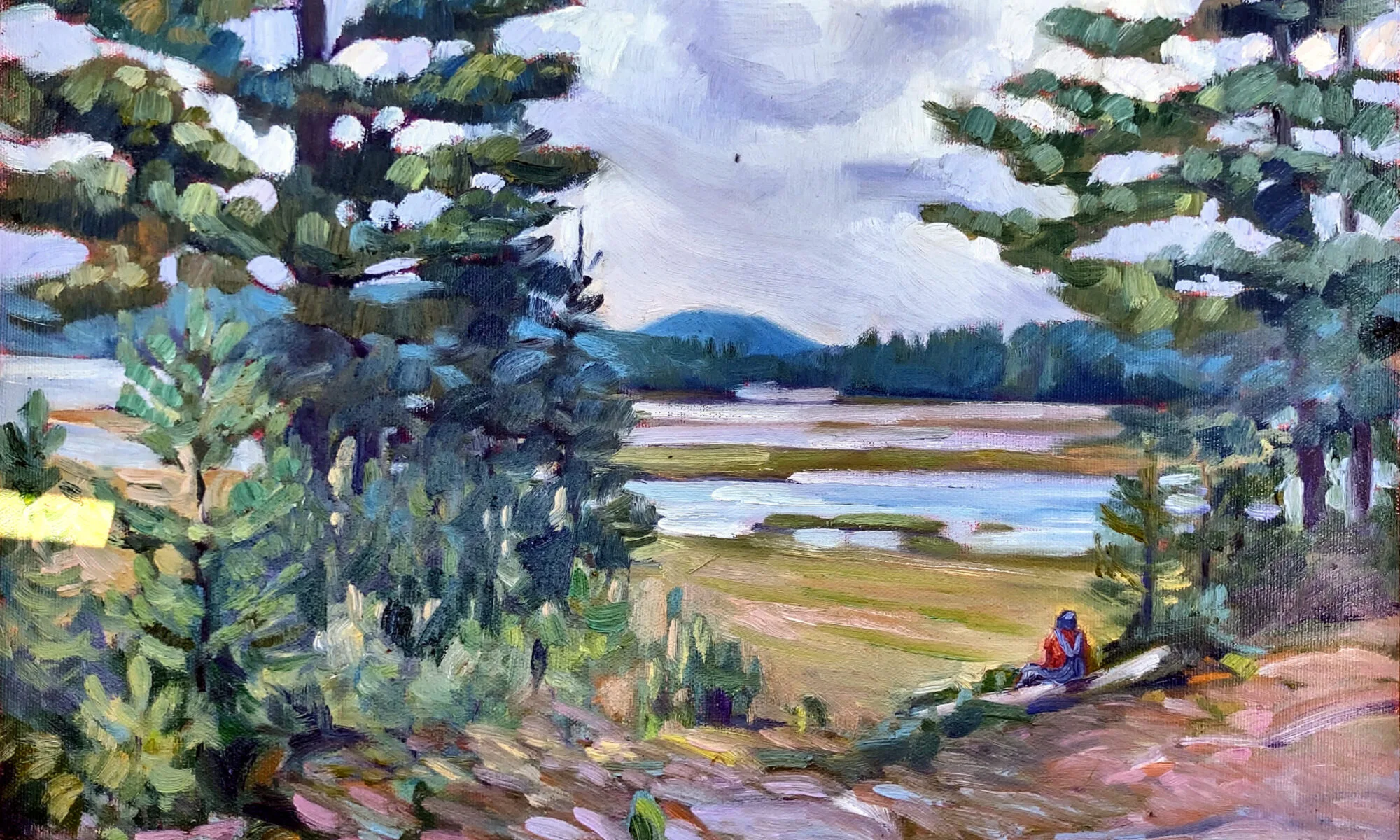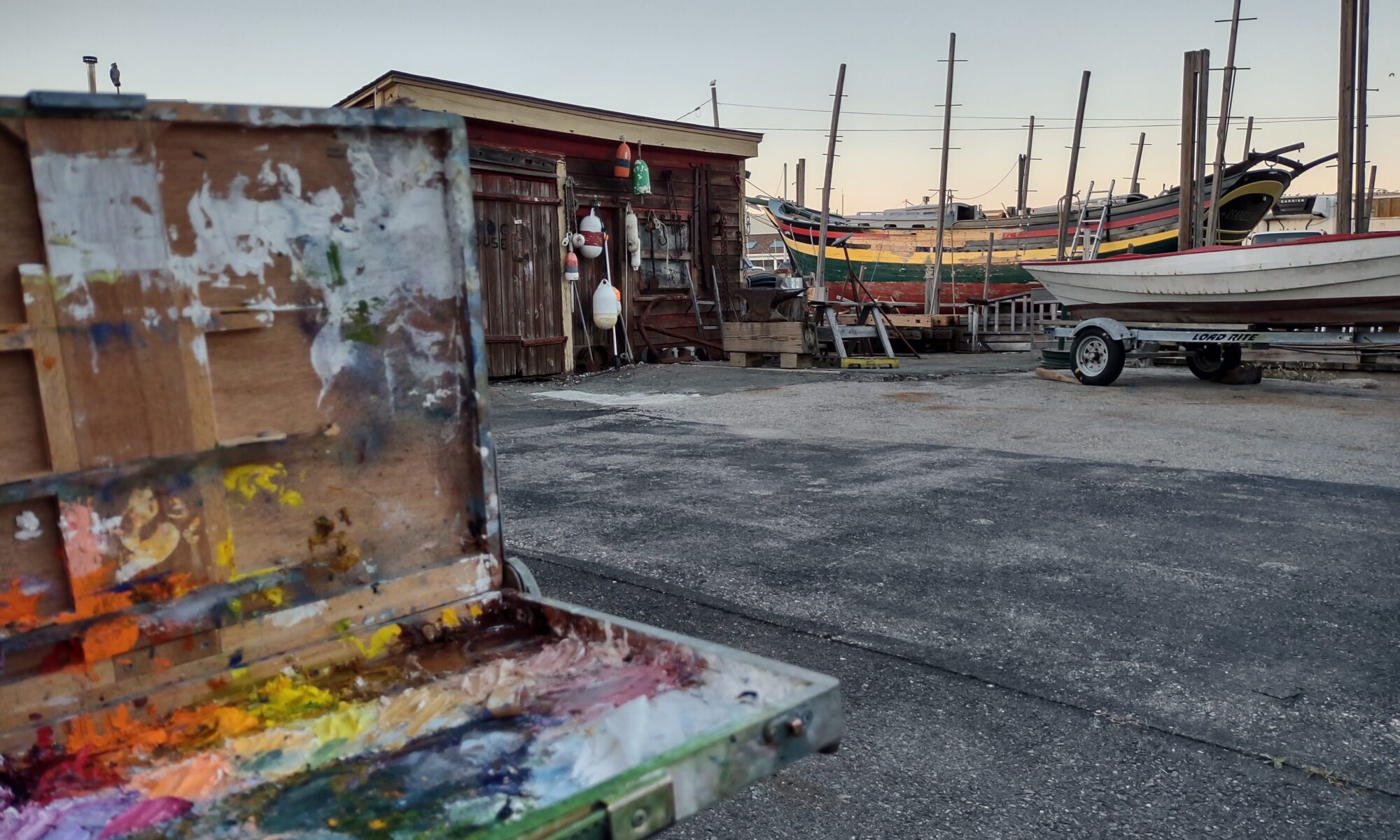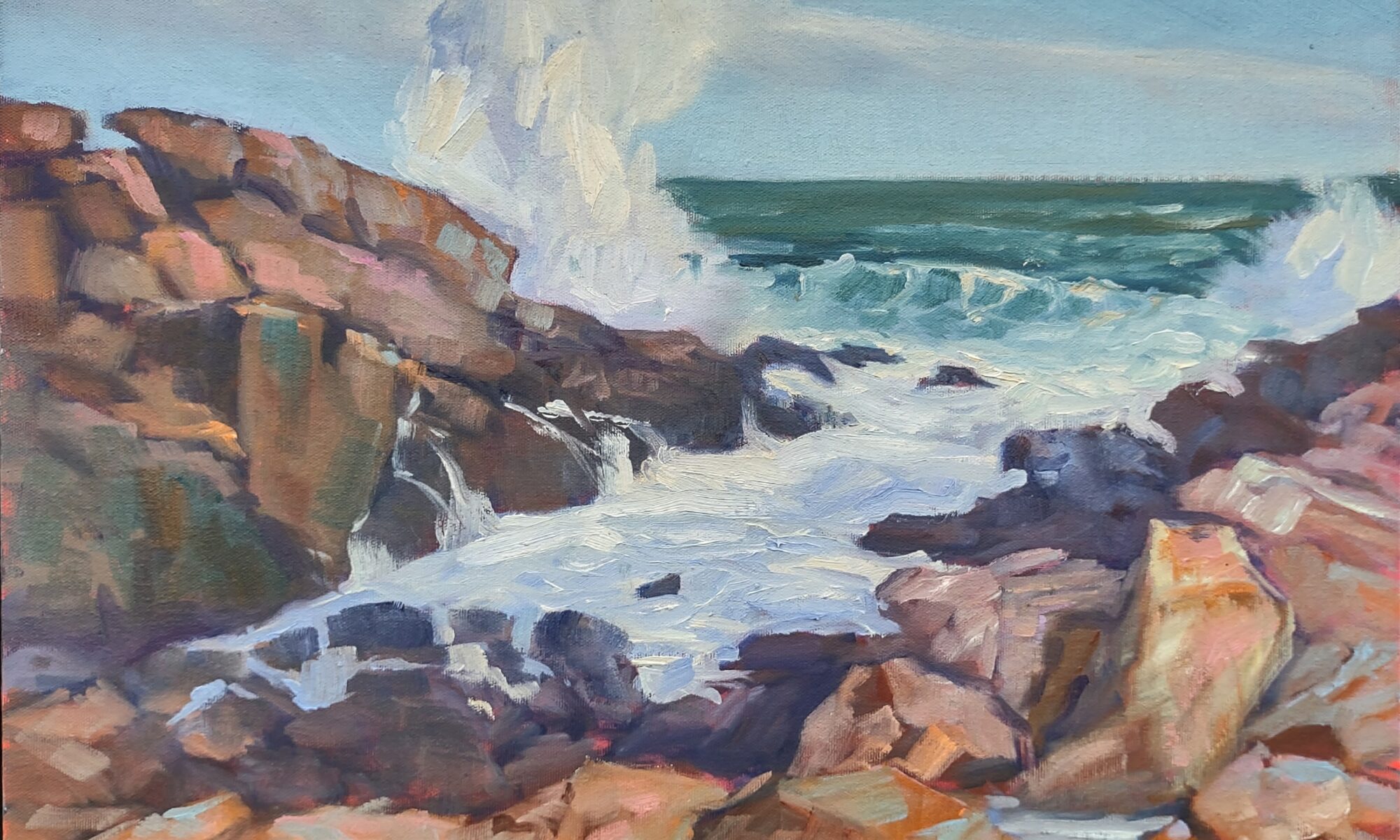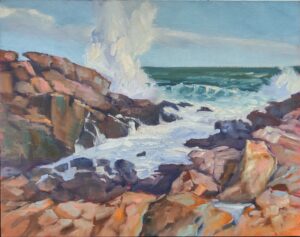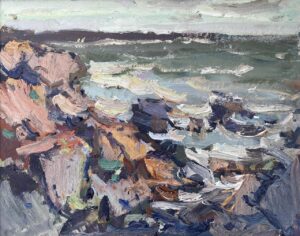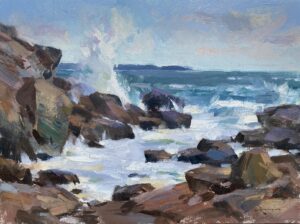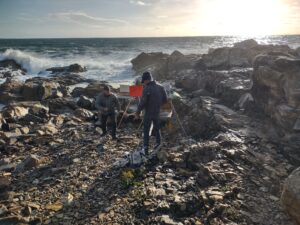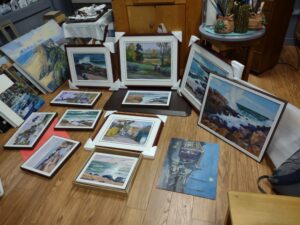
In the deep woods, the gender differences in the pipi sauvage, the business of peeing in open spaces, is reduced. Men’s clothing is designed for it; modern women’s clothes are not. (Yes, I have a SheWee; it’s more trouble than it’s worth.)
Laugh if you will, but this is a serious issue for women plein air painters. In the deep woods we can find privacy. In cities, there are coffee shops. On a 40-yard slope of open granite shelves, with the ocean on one side and luxurious homes on the other, the pipi sauvage is a man’s game.
Eventually, I found a small thicket of rose bushes. Unfortunately, I also dropped my keys without noticing.
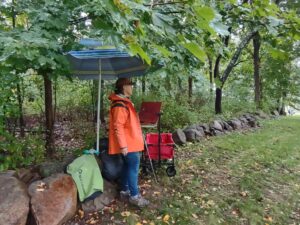
“I’m so sick of painting lavender skies,” Janet Sutherland said. I laughed, because it’s also my go-to solution for making grey days interesting. Eric Jacobsen‘s was to set up a dead-seagull still life. It’s a beautiful painting in the manner of Jamie Wyeth, but ‘it needs a special buyer’ as we say delicately about paintings that are unlikely to ever sell.
That’s why all of us at Cape Ann Plein Air (CAPA) were all thrilled to awaken Thursday to crystalline skies and clement air. I went to Cathedral Rocks, where I found Jonathan McPhillips, Mark Fernandez, Eric Jacobsen, and Mitch Baird. By eleven, I was regretting my long pants (which Rae O’Shea had kindly laundered for me). Now, this was October weather!
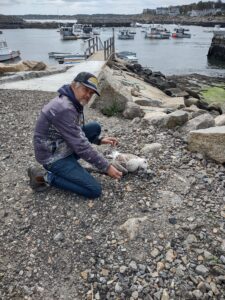
By the time I was done with two paintings, my fellows had all wandered off to find subjects elsewhere. That’s when I realized I’d lost my keys. I backtracked and searched under rocks and shrubs, praying hard. They were right where I’d dropped them.
That was the start of a day of small snafus. None of them had major consequences, but all required backtracking, searching, and recalibrating. That’s just a sign of being tired, which is to be expected after a week of very long hours. The 35 artists in this show are blessed to do this for a living, and even more blessed to be in this prestigious event, but painting is also hard work.
On Thursday evening, we painted nocturnes in downtown Gloucester. I have a hard time with night painting, as my bedtime is 7:30 PM. And I was suffering from a preconceived idea (which is seldom good in plein air). It was born of the unseasonably-cold weather and Halloween decorations around town. I wanted to paint a ghost.
Rae O’Shea kept me company. It’s not one of my most brilliant paintings (if I can be said to have ever painted a brilliant painting), but we had a great time figuring out how one paints a ghost. And if anyone says, “that’s not plein air!” I challenge them to prove that wasn’t what we saw.
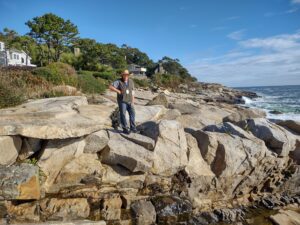
I wish I had more days to paint, because the schooner wharf at Harbor Loop is stunning-all cross angles and swooping curves. Unfortunately, we hand in our paintings today. I think I’ll take a small (9×12) canvas and frame into town with me. If I can sneak in one more painting before the flag goes down, I’ll do it.
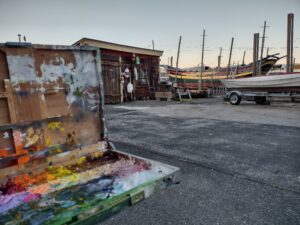
Not that this is a practical idea. I’ve already done a dozen paintings, with one wipe-out. The last thing I need is another. However, everywhere I turn, I see something else I need to paint. The combination of limpid autumn light, crashing surf, fishing fleets, and beautiful old buildings has me in visual overload.
The paintings from CAPA will be online later today. I will post an addendum as soon as I have a link.
